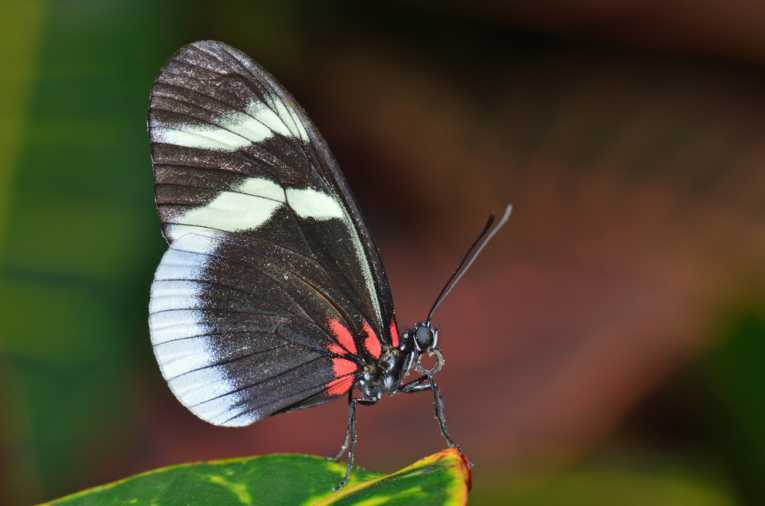The magnificent Monarch (Danaus plexippus) is the first to be seen, in1856, in a valley in Mexico, roosting in their overwinter abode. Soon after, Heliconiid butterflies were recorded roosting in the Amazonian tropics, but one hundred and forty years later, we still struggle to understand the advantage. All that energy invested in hazardous travel, for what? Birds, bats, insects and primates are communal roosters, but each have a unique social advantage.
The extensive Heliconiid family often create nightly roosts in their home range, arriving up to three hours before sunset and leaving up to two hours after dawn. Different species can use the same roost, but only where mimicry is concerned. The Heliconius genus has warning coloration because of its unpalatability. It therefore attracts mimics who gain the advantage of being left alone by predators. These butterflies also live a long time, feeding on pollen, and reproduce slowly, but what exactly is their reason for roosting. Anti predator defence and sharing of information are the top guesses, with thermoregulation or kin selection low on the list of possibilities.
The information sharing idea is that new roost mates, who would probably be related, can follow experienced butterflies to feeding areas, just as birds have been proved to do. Preventing predation is made simpler when birds for example realise that the whole of the "colony" taste bad after just one is tasted. Also the safety in numbers approach works whenever a large group presents less odds of being caught than very small groups. Your example for this is huge bat colonies, which are picked on by birds but their chance of losing this lottery is one in a million.
Panama and Costa Rica were chosen by the University of California group, from the Irvine Department of Ecology and Evolutionary Biology. Susan Finkbeiner et al began by testing sharing of information. They followed the individuals chosen to test this while for the anti-predator test, they simply used artificial models, both singly and in groups. This group size result caused a further experiment to be conducted. They tested whether natural roost size corresponded with optimal roost size indicated by the artificial groups. In 2010, H. erato was mainly used as the experimental animal, while in April and May of 2011, the Costa Rica experiments involved H. sara.

Zebra Longwing butterflies roosting. (Heliconius Charitonius) via Shutterstock
Roosts were within 30m of first flowers visited, making it possible to follow the fast flying insects successfully. 256 H. erato departures by 66 individuals in 9 roosts resulted in only 1 example of following. The same result was obtained by following H. sara in Costa Rica. However, following took place at the Lantana and Psychotria plants providing most of the flowers, leading to possibilities of recruiting more members to the roost! The point is that the roost didn't function as an information passing point.
As far as predation models were concerned, groups of five models were tested alongside the single specimens, then groups of two and ten, resulting in singles being most predated. The researchers also found that attacks by predators were morning events, as found in previous studies, mainly between 0600 and 0900 hours, by certain bird species. This means that communal roosting confers benefits even on two butterflies roosting together. Strangely, groups of ten were as vulnerable as smaller groups, but the safety in numbers theory holds in that individuals were still less likely to be predated. The selection pressure seems therefore to have encouraged this behaviour in several insects, just as is has in many other groups. How did other insects became less individual and adopt communal living?
The authors were Susan Finkbeiner, Adriana Briscoe and Robert Reed of University of California, Irvine, publishing today in the Proceedings of the Royal Society B: Biological Sciences.















